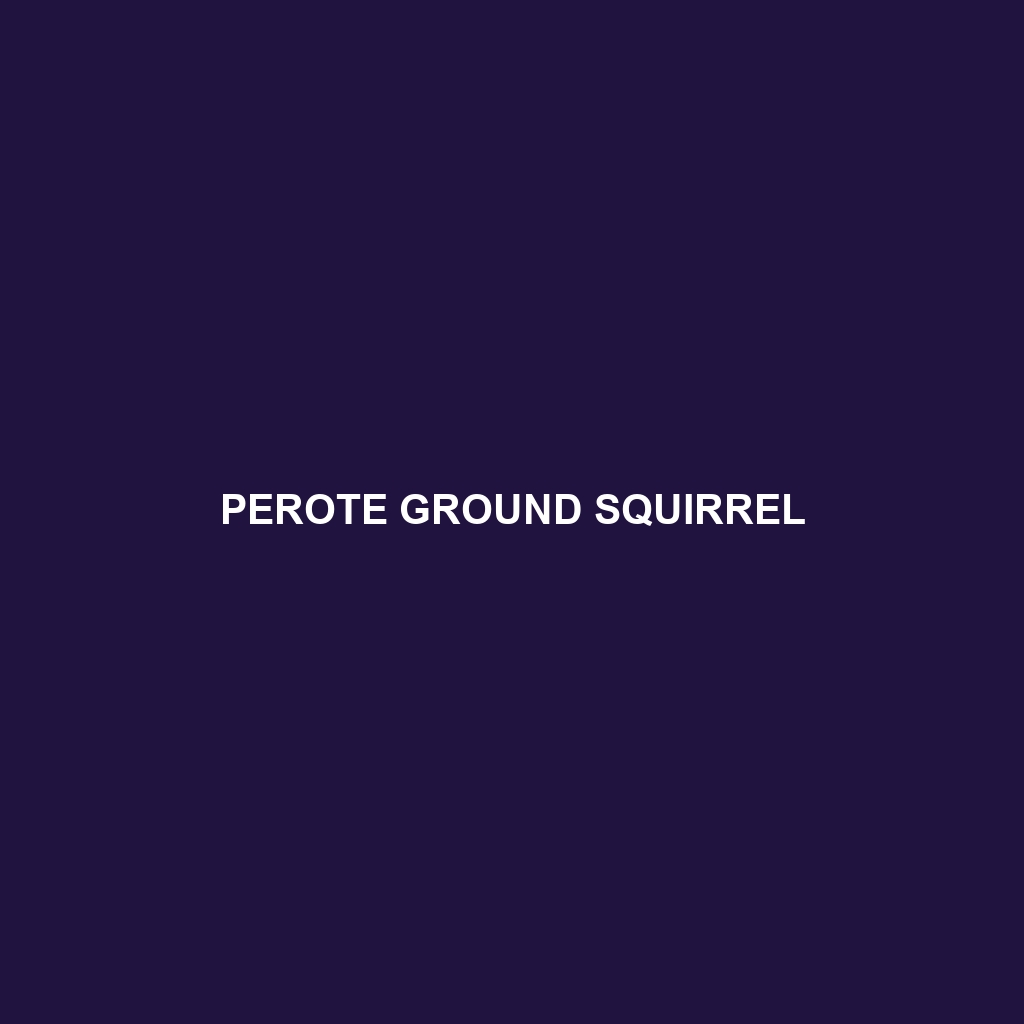Perote Ground Squirrel Description
Common Name: Perote Ground Squirrel
Scientific Name: Spermophilus perotensis
Habitat: The Perote Ground Squirrel is primarily found in the mountainous regions of central Mexico, specifically in the states of Puebla and Veracruz. This species thrives in open grasslands and shrublands situated at elevations ranging from 2,000 to 3,000 meters. The Perote Ground Squirrel prefers well-drained soils and areas with sparse vegetation, which provide both shelter and foraging opportunities.
Physical Characteristics: The Perote Ground Squirrel is a medium-sized rodent, measuring approximately 20 to 25 centimeters in length, including its short tail. Its fur is generally soft and dense, featuring a blend of brown, gray, and cream colors that aid in camouflage within its habitat. Distinctive features include large, round eyes, prominent whiskers, and short legs adapted for burrowing. This squirrel also has a slightly flattened head and a bushy tail, which is often held upright when it is alarmed.
Behavior: Perote Ground Squirrels are primarily diurnal, exhibiting activity during the day. They are highly social creatures, often found in groups called colonies. These squirrels communicate through a series of chirps and whistles to warn others of predators. They are also known for their burrowing behavior, creating intricate tunnel systems to escape threats and store food. Their ability to stand on their hind legs allows them to scan for danger effectively.
Diet: The diet of the Perote Ground Squirrel consists predominantly of seeds, nuts, fruits, and various types of vegetation. These squirrels are opportunistic feeders, often foraging on the ground or in low shrubs. They also consume insects and small invertebrates, particularly during the breeding season when additional protein is beneficial. Their foraging behaviors significantly impact seed dispersal in their habitat.
Reproduction: Breeding typically occurs in the spring, with females giving birth to litters of 3 to 8 young after a gestation period of about 30 days. The young are weaned after approximately six weeks and begin to venture outside the burrow shortly thereafter. Parental care is primarily the responsibility of the mother, who protects and nurtures the offspring until they become independent.
Conservation Status: The Perote Ground Squirrel is currently listed as vulnerable due to habitat loss and degradation caused by agricultural expansion and urban development. Conservation efforts are underway to protect their natural habitat and ensure population stability.
Interesting Facts: The Perote Ground Squirrel is known for its unique burrowing techniques, creating extensive tunnel networks that can reach impressive depths. They play a crucial role in maintaining soil health by aerating the ground through their burrowing activities. Additionally, these squirrels have been observed exhibiting playful behavior, such as chasing one another and engaging in social grooming.
Role in Ecosystem: As both prey and foragers, Perote Ground Squirrels play a vital role in their ecosystem. They provide a food source for various predators, including foxes, hawks, and snakes. Furthermore, their feeding habits contribute to seed dispersal, facilitating plant growth and biodiversity in their habitat. By aerating the soil through their burrowing, they promote soil health and nutrient cycling, which benefits other flora and fauna in the region.
